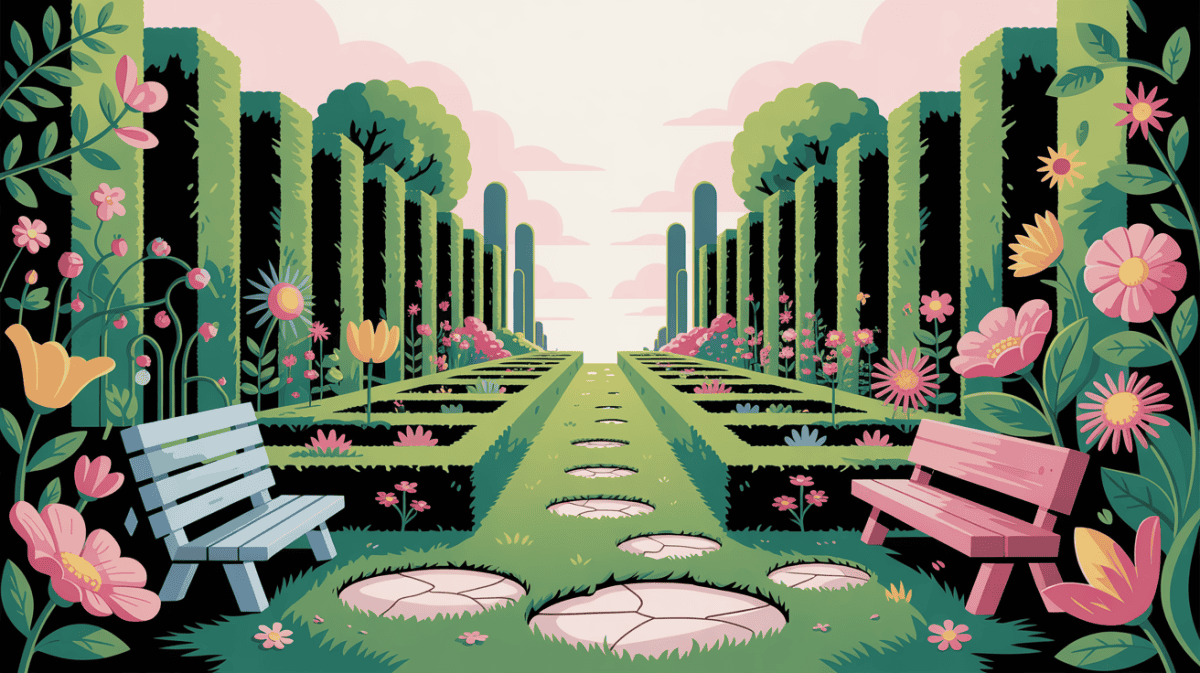Imagine strolling through a meticulously manicured garden. Everything gleams: symmetrical layouts, pristine hedges, and not a leaf out of place. Yet, beneath the perfection, a silent question lingers: Why does it feel so empty? Once, that feeling might have pointed to a disconnect between neat design and raw human emotion. Now, generative AI in design is taking this disconnect to new extremes, raising pressing questions about what we gain—or lose—when creative processes become automated.
Where Design Meets AI
Generative AI can churn out dozens of prototypes before you’ve even finished your first cup of coffee. Its superhuman capacity to produce swift iterations sounds like a dream for anyone burdened by tight deadlines. But as these AI tools push efficiency, they often sidestep a stark reality: emotion isn’t easy to replicate. Whether it’s a garden or a digital product, true vibrancy grows from the warmth of human intention. Machines, however, excel most at mimicking established patterns—leaving questions about genuine creative soul unanswered.
The Risk of a Bland Tomorrow
Modern creative fields are bracing for seismic shifts. In content design, AI tools can produce blog posts or brand imagery overnight. AI-based generative design platforms help architects brainstorm building layouts or design smaller objects, radically shrinking development time. Despite these leaps, many argue that the human hand, with its quirks and imperfections, is what lends authenticity to a design. Once the process is relegated to efficient algorithms, we might end up with a glut of visual and written content that is polished but hollow.
Beyond a Perfect Shell
As with the fabled gardens commissioned by rulers obsessed with scale and exactness, AI-driven designs often risk unveiling a reign of cold precision. The missing element is the intangible—and it’s precisely what fosters a deeper connection. Researchers on AI-generated art note that even the most technically impressive piece can feel emotionally flat, because the designer’s intent was guided by code, not a lived human experience. Yes, the final output might be mesmerizing, but does it stir the heart?
A Tool or a Tyrant?
Emerging discussions around ownership and originality complicate matters further. When a single text prompt can yield a design in seconds, who’s the real creator—the user or the machine? Some see it as the ultimate democratization of art and design, while others warn that creativity risks being buried under infinite AI-generated imitators. Disillusionment with mass-produced generative content may lead people to hunger for designs touched by authentic craftsmanship—much like craving a stroll through a wild, natural garden instead of one shaped to display power.
Cultivating an Emotionally Rich Future
Creators who embrace advanced AI tools must remember that real connection stems from thoughtful intention. As generative AI continues refining its patterns, the real opportunity lies not in mass-producing pleasing exteriors, but in weaving why we make something into how we make it. An AI-sketched blueprint can jump-start the creative process, but it can’t replicate the subtle magic that comes from human emotion and care. Just like a personal sketch reveals the artist’s hidden motives, a heartfelt design—physical or digital—offers a richer experience to those who use it.
Provocation for the Present
What if we took the easy route and outsourced beauty entirely to algorithms? We might see spectacular designs and comprehensive functionality—but at the cost of human passion. If our future libraries and gardens and apps all carry the same machine-precision aesthetic, might we lose what truly nourishes us? The answer depends on whether we choose to see AI as a clever companion for creative expression or as a mechanical overlord reigning over design choices. The path forward surely lies in using generative AI to amplify imagination, not replace it, and insisting that real depth rarely comes from an algorithm’s command.
In the end, soul in design blooms from people who create with empathy and conviction. Technology, no matter how advanced, can’t create a pulse for us. It can only replicate what we already carry in our hearts. And if we choose only to imprint envy, ease, or bland efficiency onto our creations, we’d better be ready for a future as empty as a garden designed merely to prove our own power.


Lascia un commento